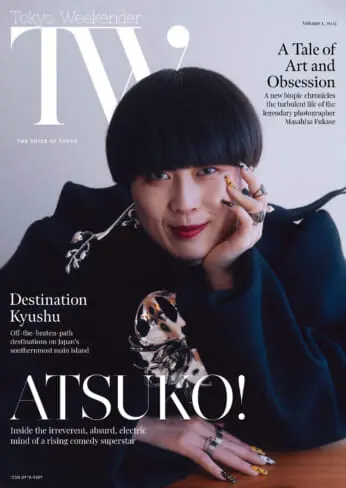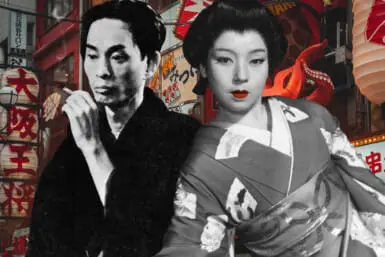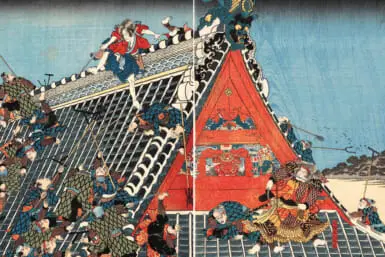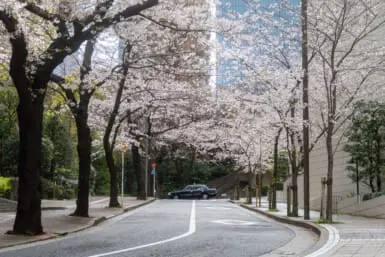We all know that red roses signify passion and love, but what about other flowers? Much as the Victorians had floriography, the Japanese have hanakotoba, or set meanings assigned to each flower. Knowing the hidden language behind flowers can make interacting with nature more exciting — and gifting flowers that much more meaningful. Read on to learn, by season, the hanakotoba of some of Japan’s favorite flowers.
What Is Hanakotoba?
Hanakotoba translates to “flower words” and refers to the meanings behind each flower. Being aware of hanakotoba is useful when giving a bouquet to a loved one, but the language of flowers is also deeply ingrained in Japanese culture. From floral designs in kimono to being deliberate about the use of specific flowers in ikebana, hanakotoba can enrich art with another layer of context.
Surprisingly, hanakotoba is a relatively new concept in Japan, said to have been introduced to the country in the late 19th century. The poetic concept of hanakotoba translated smoothly into Japanese culture due to the country’s profound love for nature.
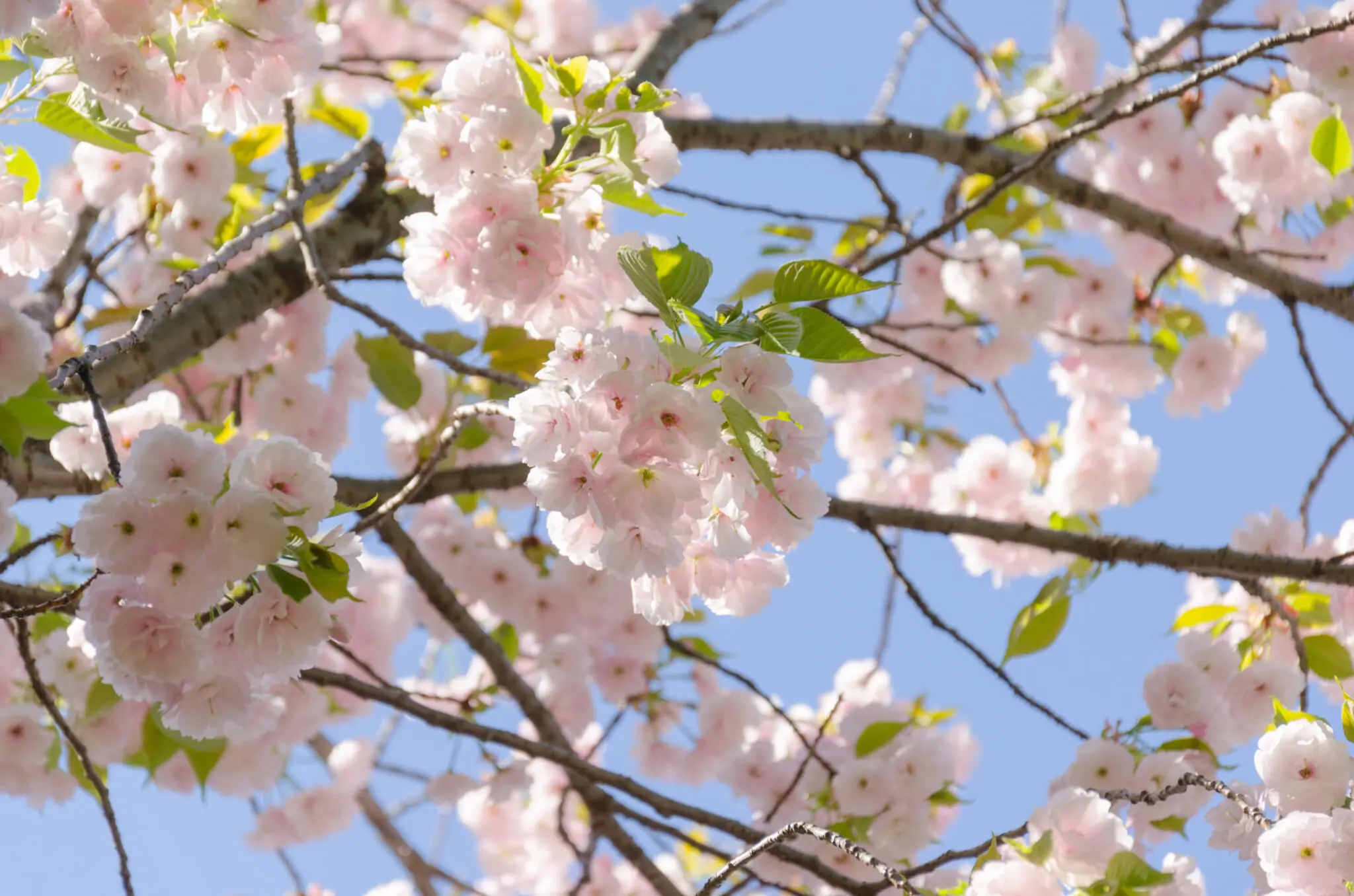
Spring Flowers
Cherry Blossom (Sakura)
Meanings: exceptional beauty, elegance, refinement
Months in bloom: February to April
What better way to start this list than with the iconic sakura? Only in full, resplendent bloom for a few weeks of the year, the ephemeral cherry blossom is Japan’s representative flower. As such, the blossom was bestowed with meanings reflecting Japan and the values of the Japanese.
There are several types of cherry blossoms, and each variety has a slightly different meaning. For example, Somei Yoshino blossoms symbolize purity and transcendent beauty, while yaezakura blossoms symbolize educated refinement.
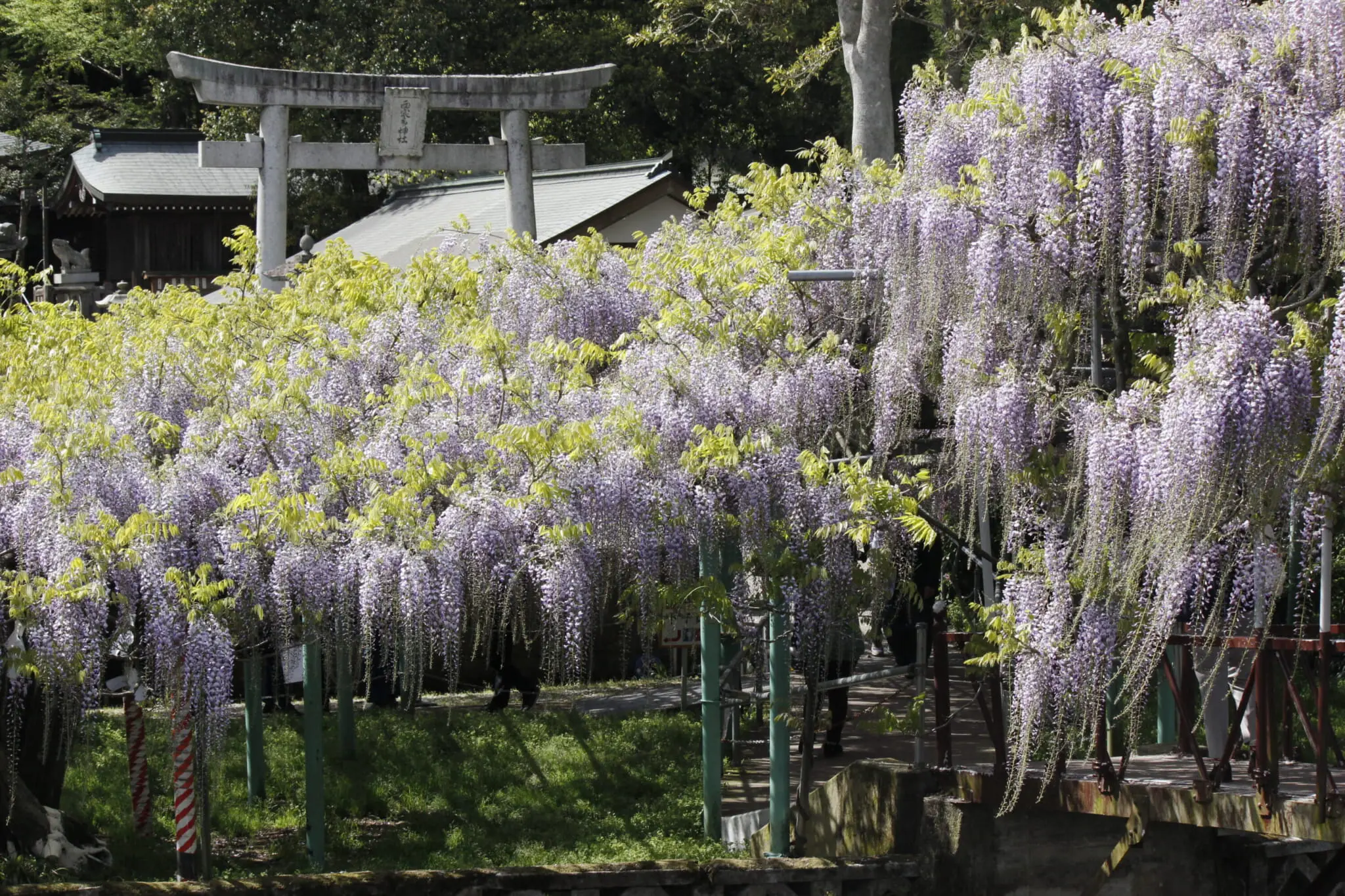
Wisteria (Fuji)
Meanings: kindness, welcome, loyalty, long-lasting love
Months in bloom: April to May
Blooming in mid-spring, wisteria flowers add swathes of color to forested hills and manicured gardens alike. Flowers come in several colors, though purple wisteria blossoms are the most common, and several spectacularly large vines drench a number of gardens across Japan in a world of lavender and lilac.
As the gentle swaying of wisteria in the wind resembles a warm invitation, the flower’s hanakotoba has become one of welcoming someone in for a long and faithful love. The flower’s meaning is surprisingly passionate, signifying a promise for a never-ending love that transcends death.
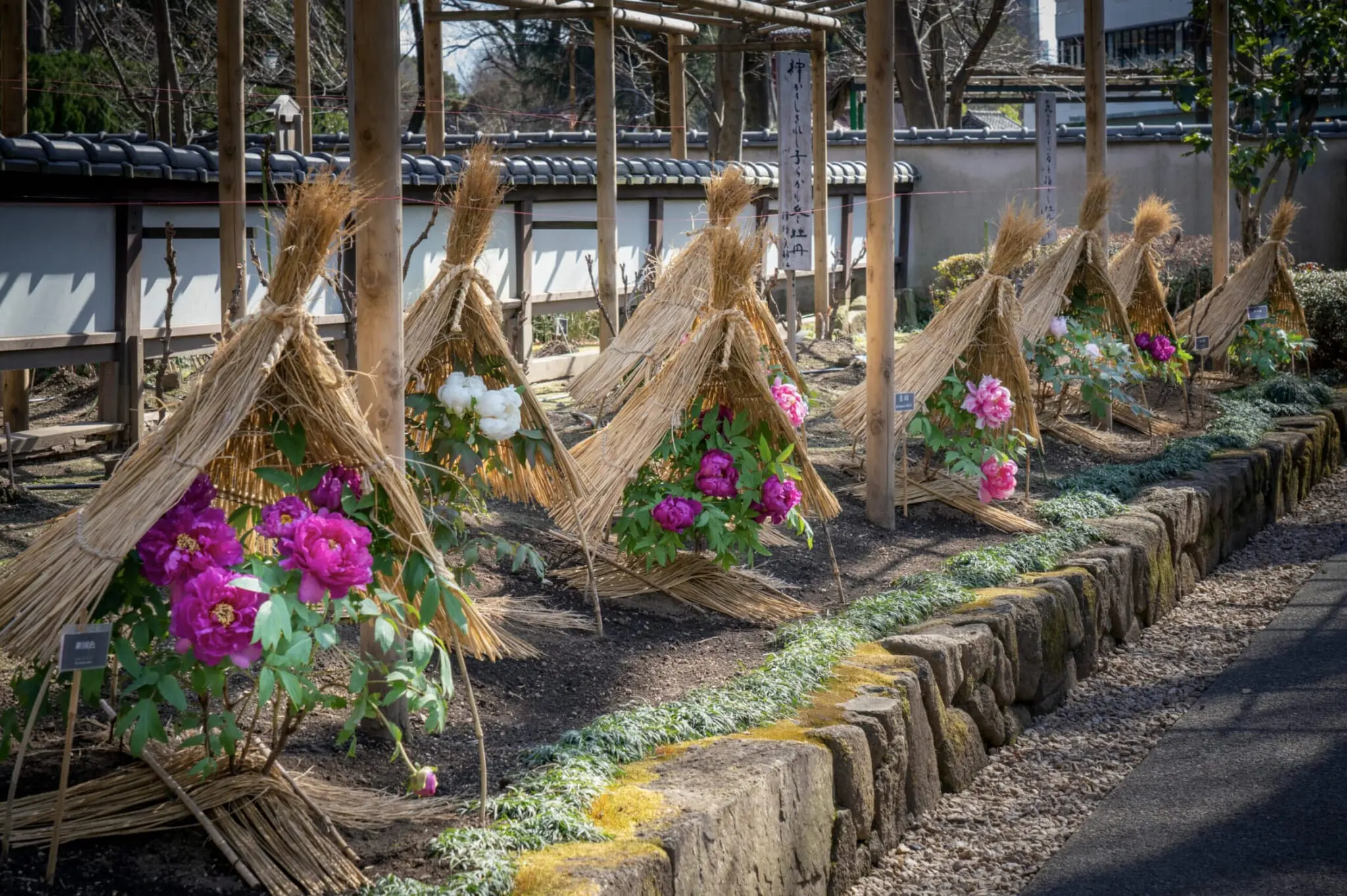
Peony (Botan)
Meanings: nobility, shyness, sincerity
Months in bloom: April to May
Standing tall on its own, the beautiful peony has hanakotoba associated with royalty. However, peony blooms are also associated with shyness and introversion, perhaps because they bloom apart from each other. In Western cultures, the peony can signify compassion, making it a great flower to give to relatives and friends.
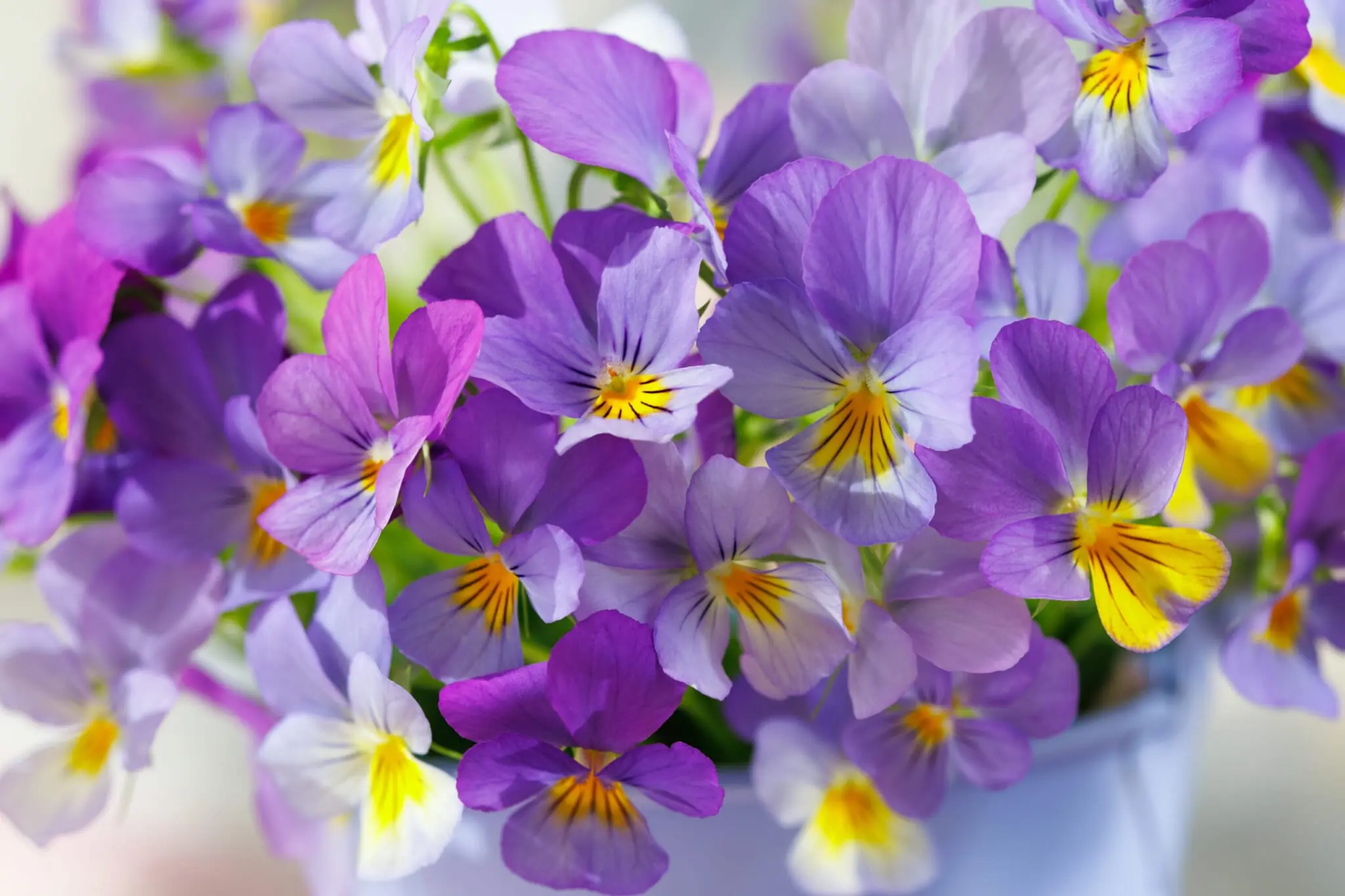
Violet (Sumire)
Meanings: sincerity, humility, a small happiness
Months in bloom: March to May
Violets, known as sumire in Japanese, are adorable flowers that signify sincerity and humility in Japanese culture. And indeed, catching sight of these tiny flowers — which come in a variety of colors in addition to purple — as you go about your day truly does bring happiness.
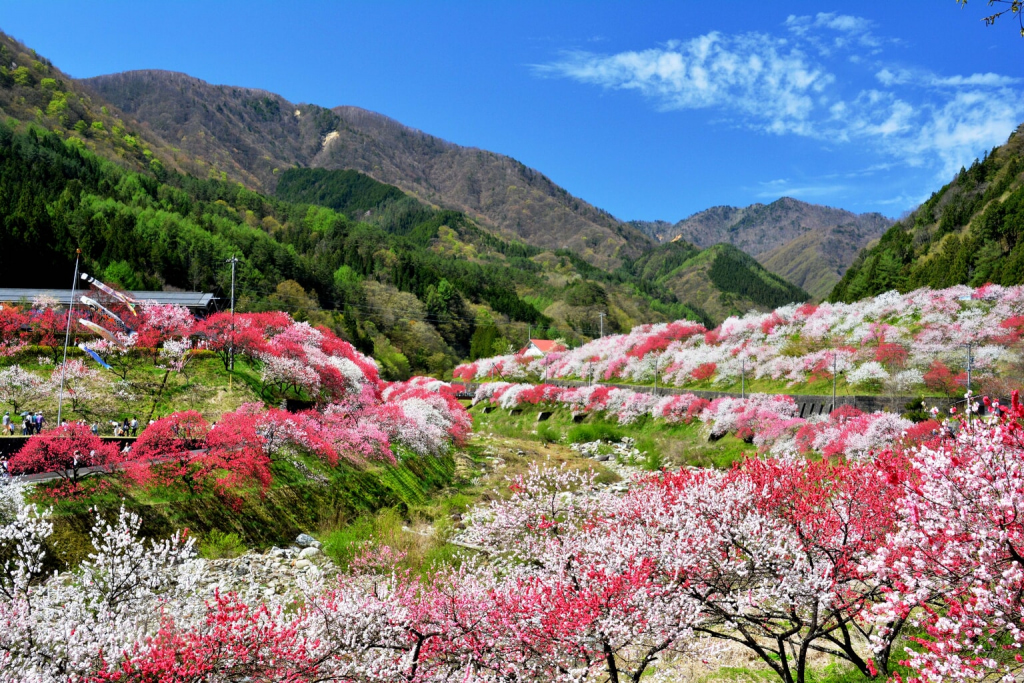
Peach blossoms in Achi
Peach Blossom (Momo)
Meanings: charming, good-natured, invincible
Months in bloom: March to April
Peach trees are known for bearing abundant fruit, so perhaps it’s not surprising that they’re associated with fertility. Their blossoms, often mistaken for sakura, have grown to represent women and are even a symbol of Hina Matsuri (the Doll Festival, or Girls’ Day) — also known as Momo no Sekku (the Peach Festival).
Hanakotoba associated with peach blossoms include “charming” and “good-natured.” Peaches or peach trees also make appearances in many folktales, including Momotaro, the story of a boy-turned-hero born from a peach. This association lends peach blossoms the concepts of strength and invincibility.
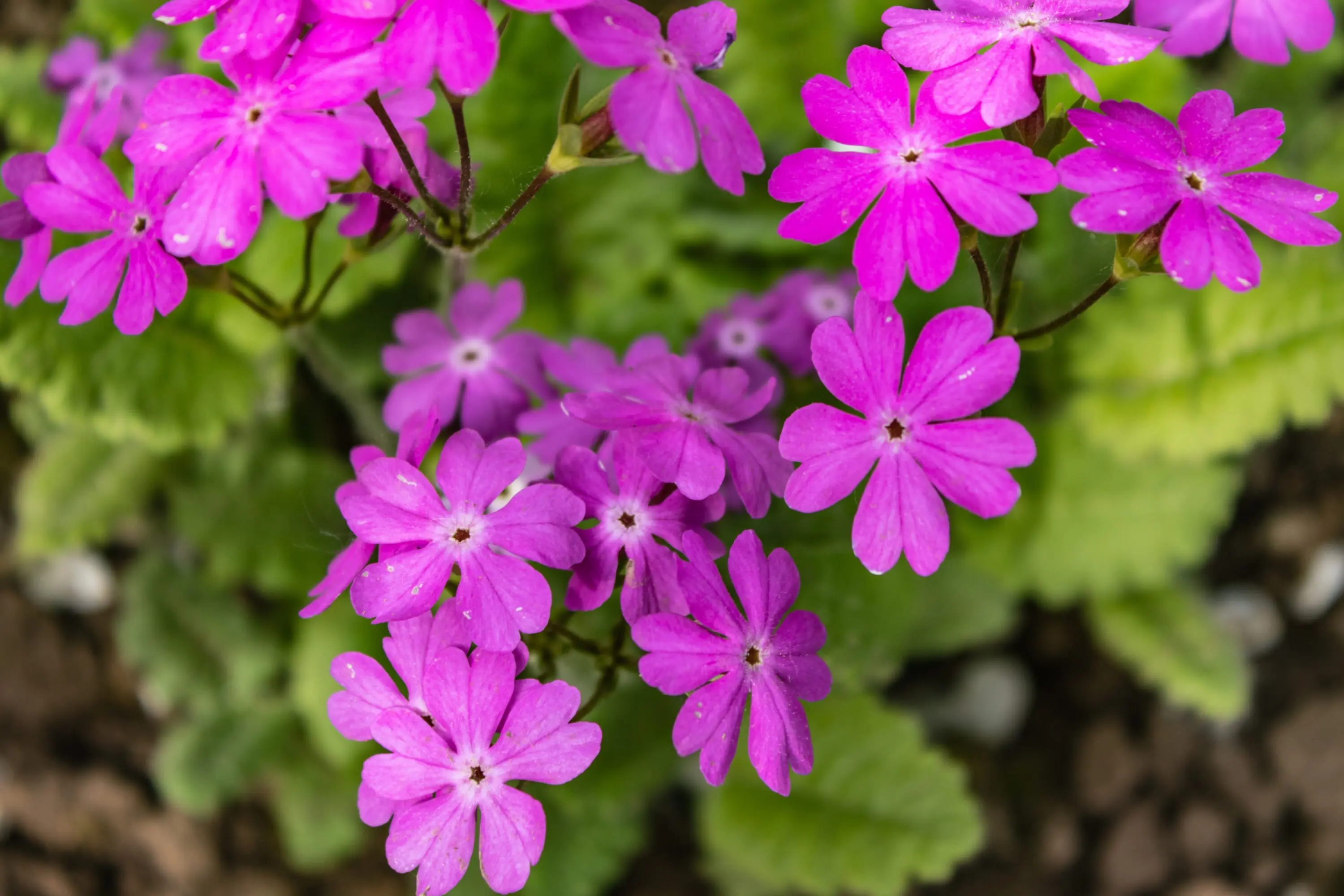
Japanese Primrose (Sakuraso)
Meanings: first love, childhood dreams, purity
Months in bloom: April to May
Japanese primrose, small pinkish-purple flowers often found in fields, have represented spring since the Edo period. A flower that only blooms for a short period during springtime, Japanese primrose represents the nostalgia of first love and childhood hopes.
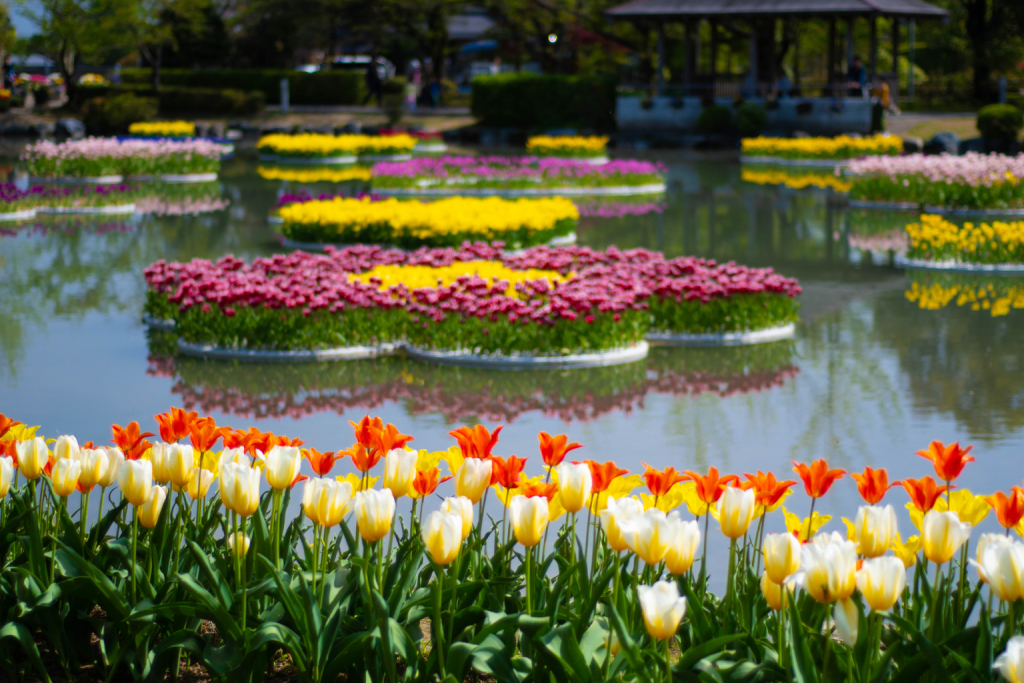
Tonami tulip festival in Toyama
Tulip (Chuurippu)
Meanings: confessions of love, consideration, benevolence
Months in bloom: April to May
Tulips are associated with a wide range of meanings that vary by color. Red tulips symbolize love and gratitude; white tulips represent heartbreak and yearning; pink tulips represent hard work and pure love; orange tulips symbolize shyness; purple tulips mean undying love; and yellow tulips represent honesty and unrequited love.
With so many possible meanings, tulips provide an exciting prospect when offering them as gifts. When giving the flowers, add depth to your bouquet by exploring the meanings of each color.
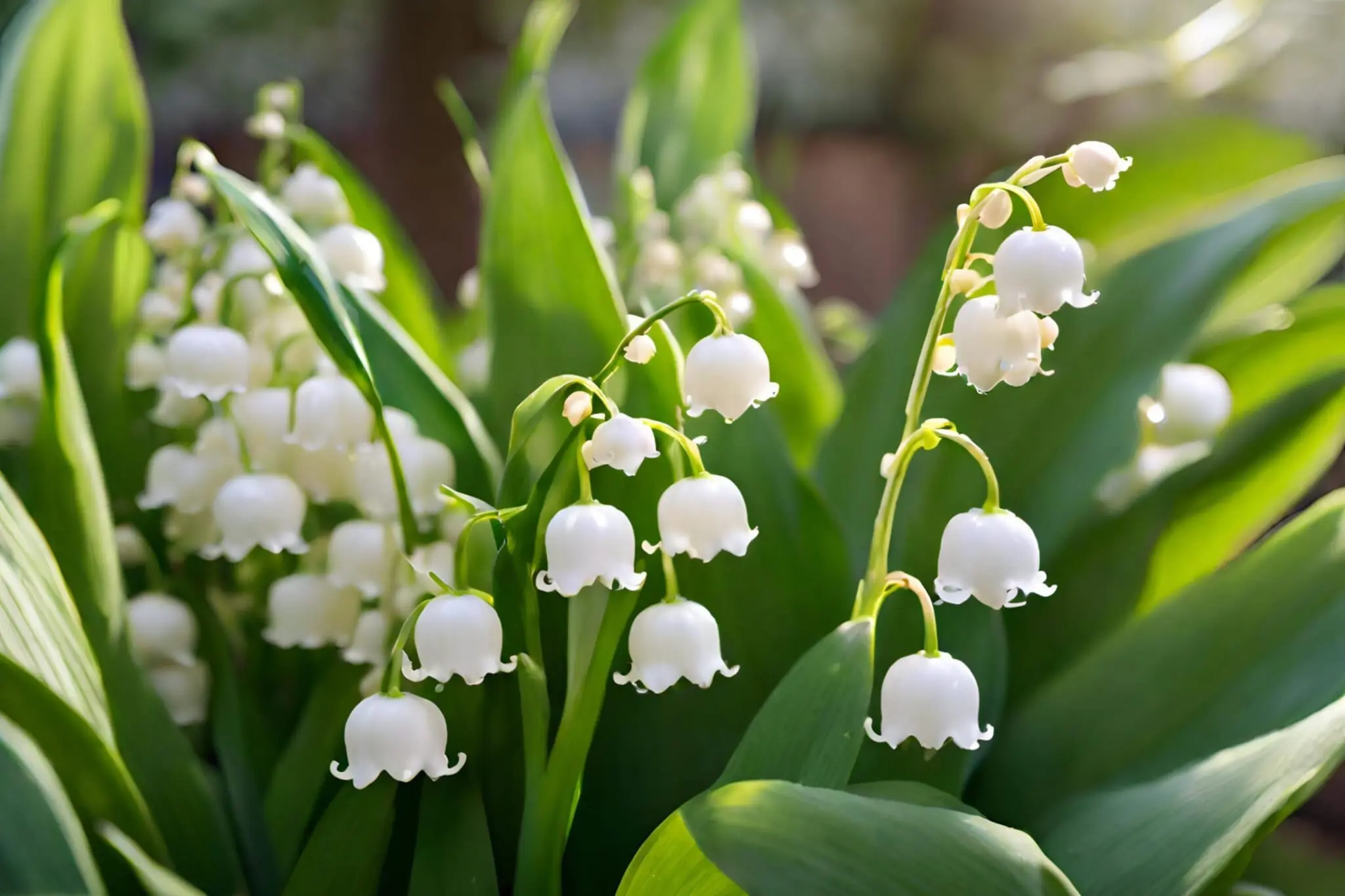
Lily of the Valley (Suzuran)
Meanings: return of happiness, overflowing beauty, humility
Months in bloom: April to May
The adorable lily of the valley, with its bell-shaped flower, is often associated with the Virgin Mary in Western culture, leading to its connection to beauty and happiness. As the small flowers are often hidden behind the plant’s large leaves, lily of the valley is also associated with humility.
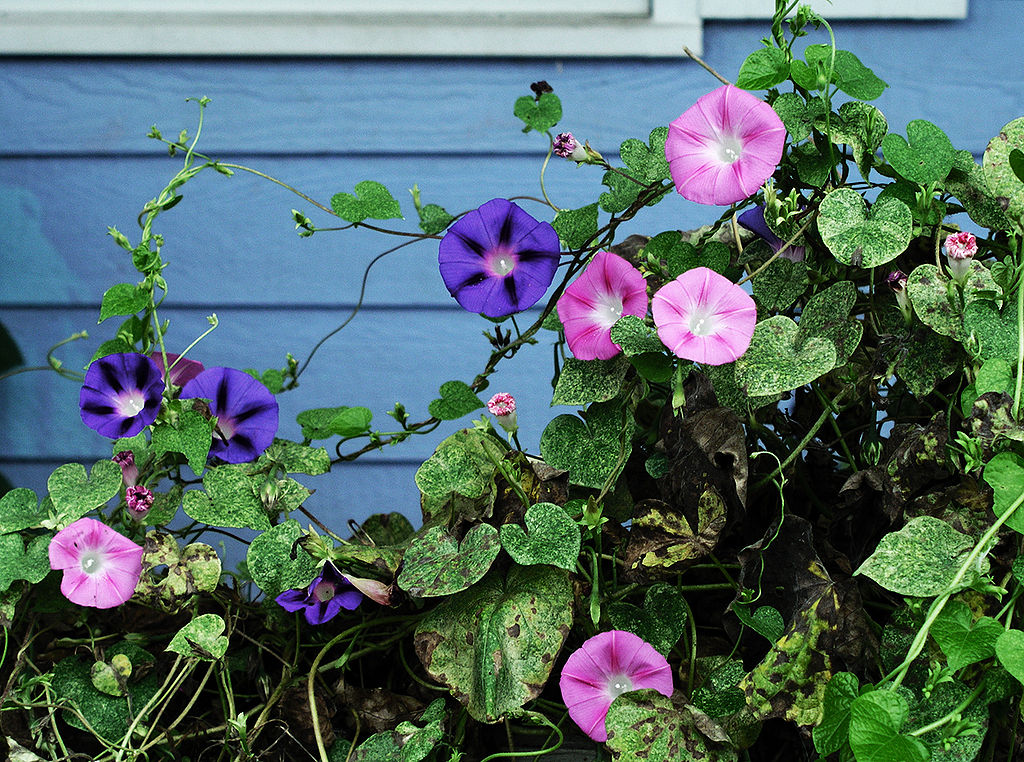
Summer Flowers
Morning Glory (Asagao)
Meanings: fleeting love, promise, “I cling to you”
Months in bloom: July to October
The morning glory gets its name from how it blooms early in the morning and closes its petals as the heat of the day takes over. The flower, like a fleeting summer love, symbolizes a refreshing, soft romance. Though the flower’s hanakotoba have slight variations based on color, one general meaning, “I cling to you,” springs from the way morning glory vines wrap around objects in their environment.

Sunflower (Himawari)
Meanings: yearning, love at first sight, “I only have eyes for you”
Months in bloom: July to October
Sunflowers, often bright yellow and known for chasing the sun, are a symbol of summer. Naturally, the flower’s hanakotoba reflect that. The sunflower symbolizes yearning, love at first sight and the idea of only having eyes for a specific person. These meanings stem from the way the summer flower admires the sun.
It’s interesting to note that the hanakotoba associated with sunflowers can change depending on the number of flowers given, with one sunflower symbolizing love at first sight and 999 (!!) symbolizing love that will continue into the next life.
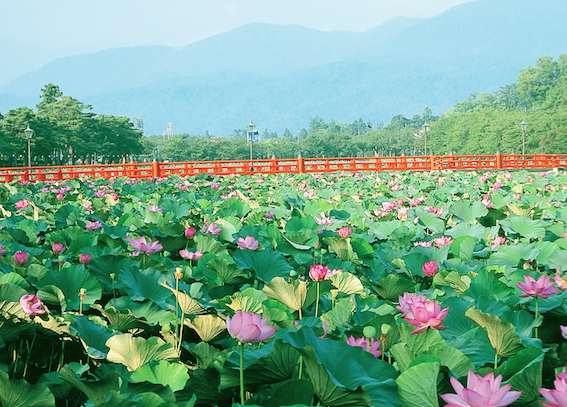
Lotus (Hasu)
Meanings: sacred, salvation
Months in bloom: July to August
In Buddhist tradition, the lotus flower has long been considered a sacred flower that leads believers to nirvana. As such, in hanakotoba, the lotus symbolizes holiness and a desire for rescue.
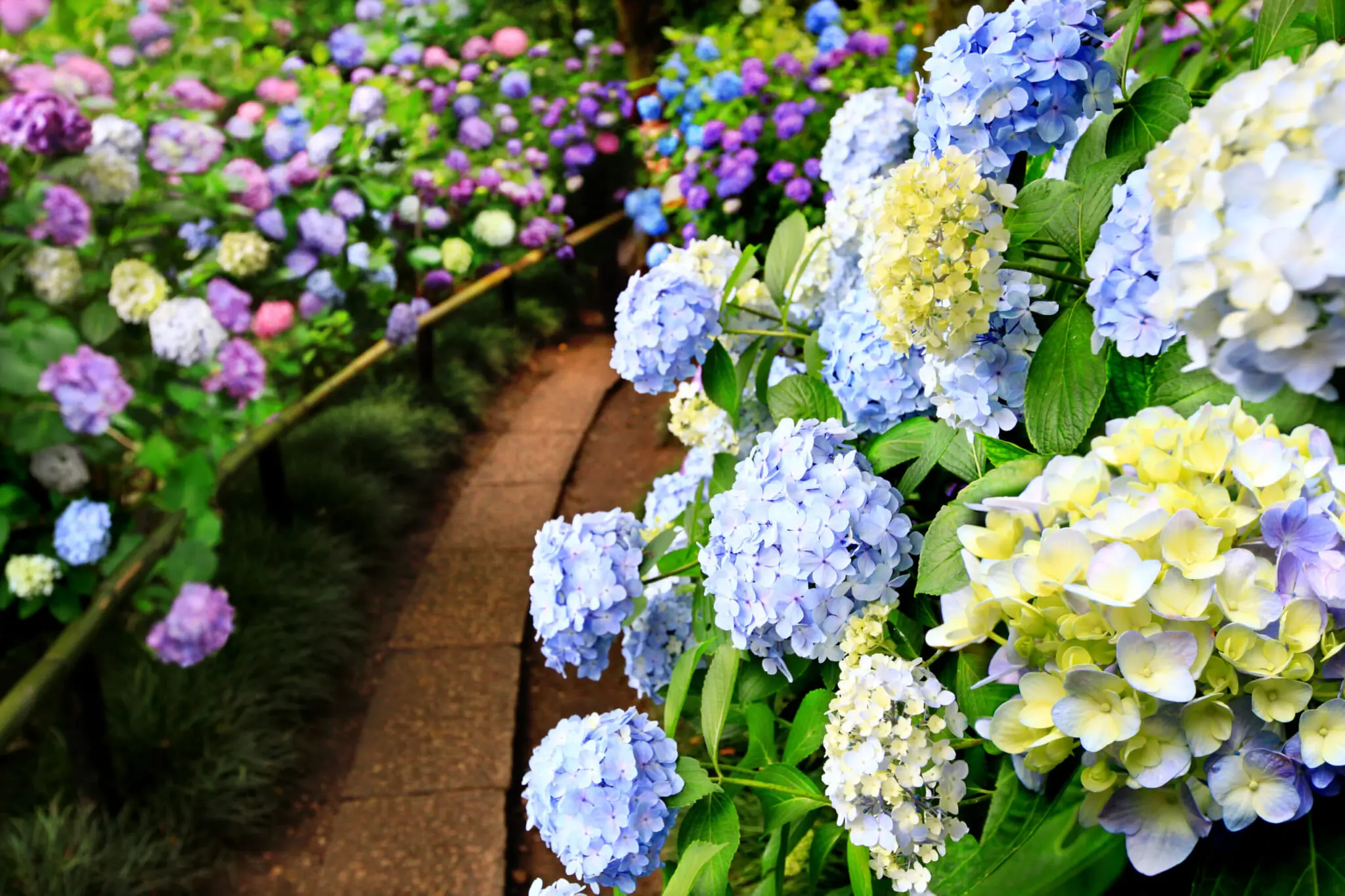
Hydrangea (Ajisai)
Meanings: fickleness, patience, mystery, intelligence
Months in bloom: June to July
Because hydrangeas slowly change color across their relatively long blooming period, the hanakotoba associated with them include words related to fickleness and patience. As with other flowers that come in multiple hues, a hydrangea’s color affects its meaning, with blue and purple hydrangeas associated with intelligence and mysterious beauty, and pink hydrangeas signifying a healthy girl or strong love.
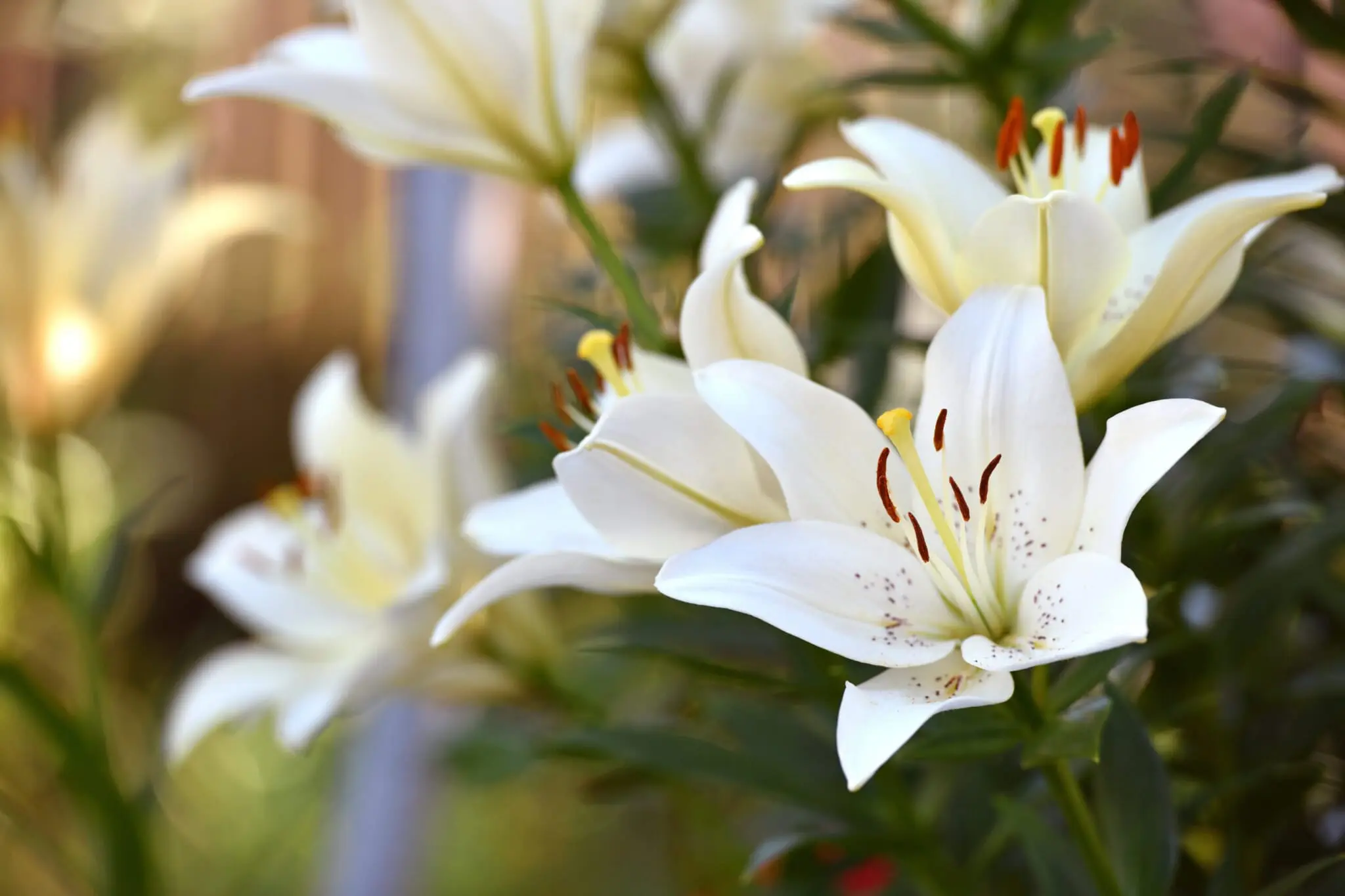
Lily (Yuri)
Meanings: purity, innocence, dignity
Months in bloom: June to September
The lily is heavily linked to Christianity and is often used to symbolize the Virgin Mary, a connection that gives the lily in general and white lilies in particular the meaning of purity. In Japan, its simple, strong appearance has also grown to be associated with dignity.
Keep in mind that the color and variety of the lily will influence its meaning, so it’s worth exploring the lily’s hanakotoba more deeply if you plan to use the flower in a gift or craft.
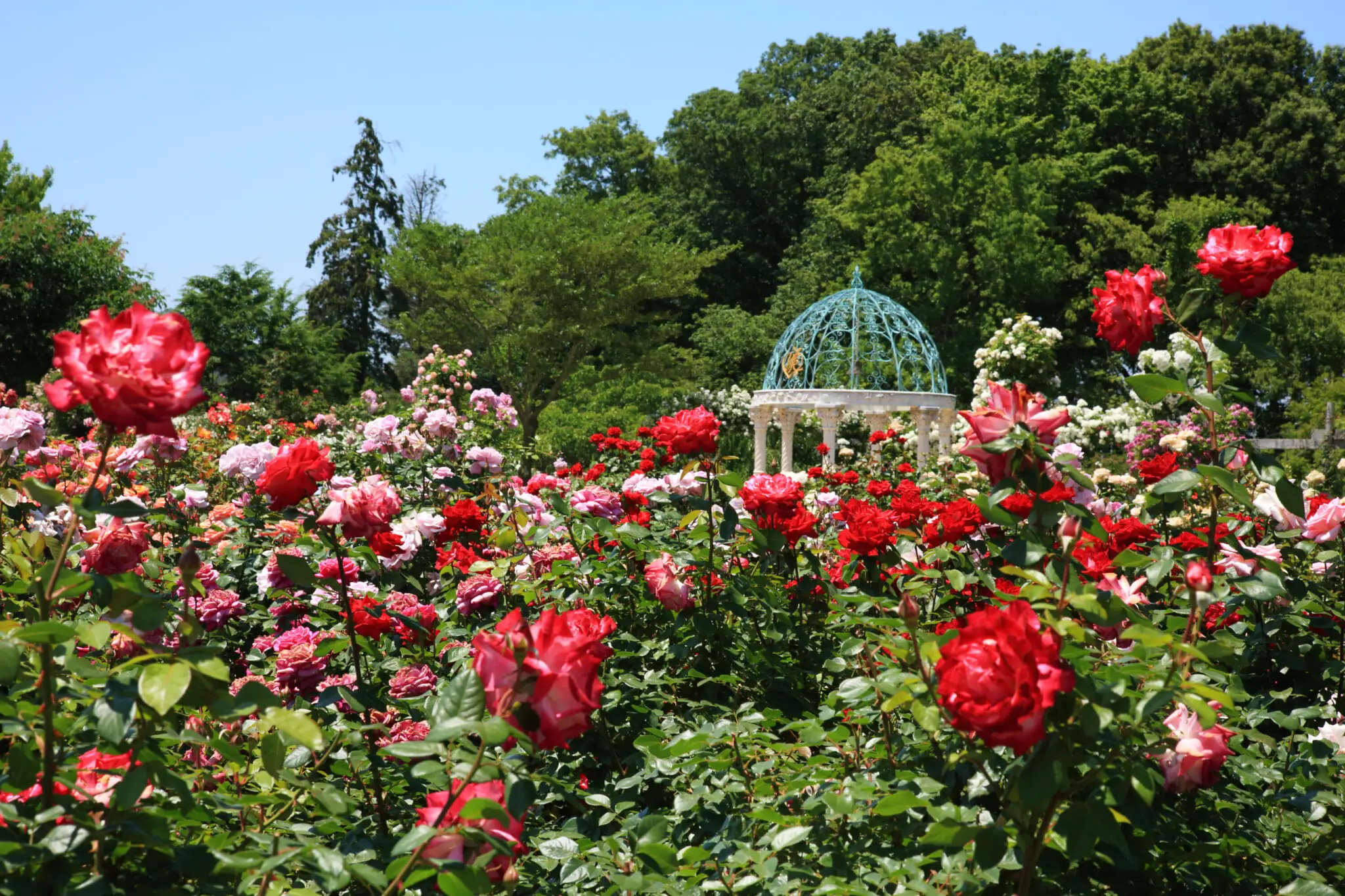
Autumn Flowers
Rose (Bara)
Meanings: beauty, love, passion, blessing
Months in bloom: May to November
There are few flowers whose meanings are as well known as those of the red rose. The red rose is associated with passionate love, but the rose’s meaning in general varies by color and, surprisingly, even by number. For instance, while a single rose means “I have fallen in love with you at first sight,” a gift of 108 roses means “Will you marry me?” Interestingly, a gift of 13 roses means “eternal friendship,” which feels like a rather extravagant way to celebrate being in the friend zone.
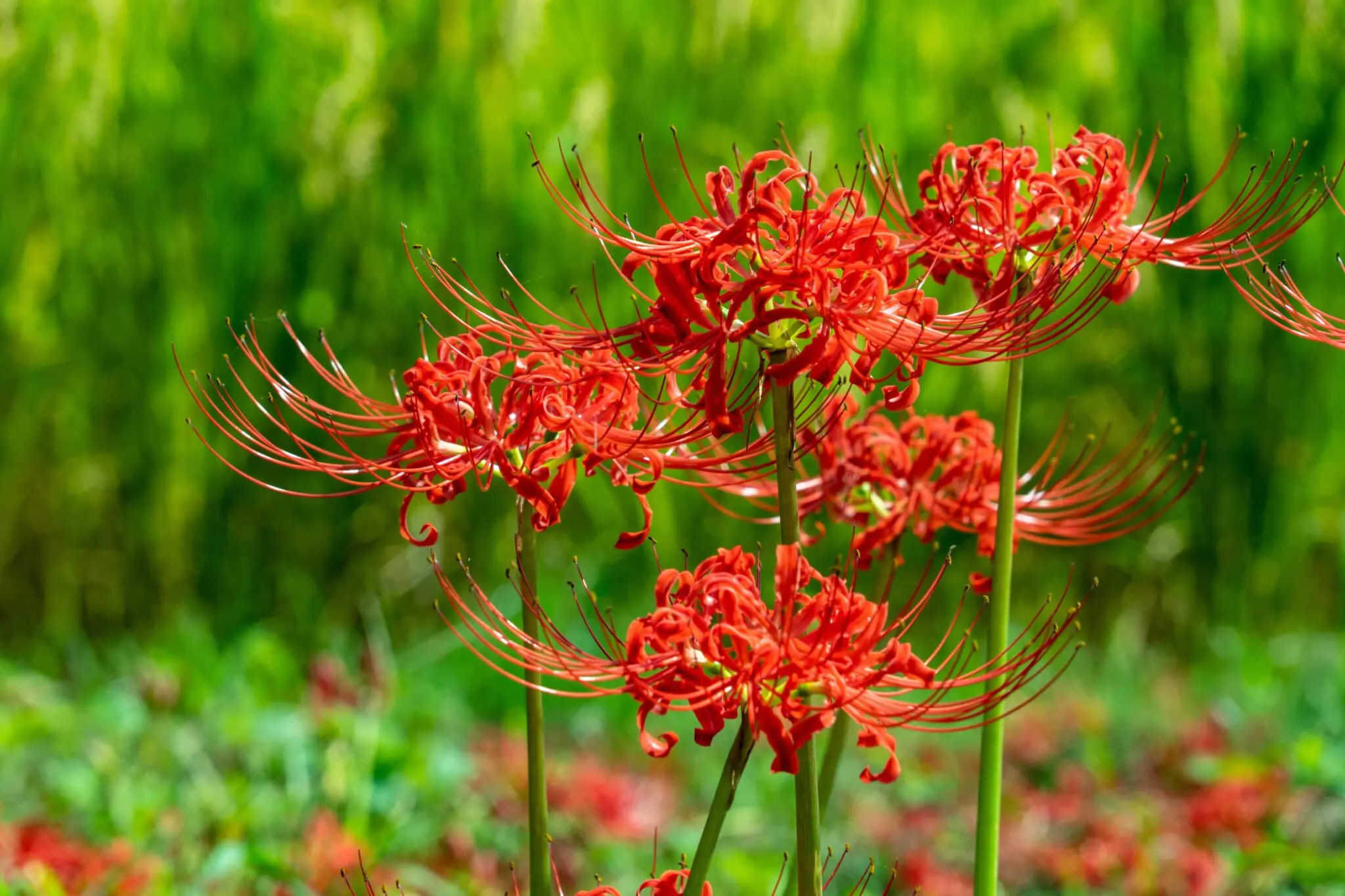
Red Spider Lily (Higanbana)
Meanings: sad memories, independence, reunion, “I only think of you”
Months in bloom: September to October
Often seen in anime and admired for its mystical beauty, the red spider lily is said to be the flower that blooms along the Sanzu River, which connects the mortal and heavenly realms. In hanakotoba, higanbana symbolize the sadness of farewells and an optimistic, strong drive.
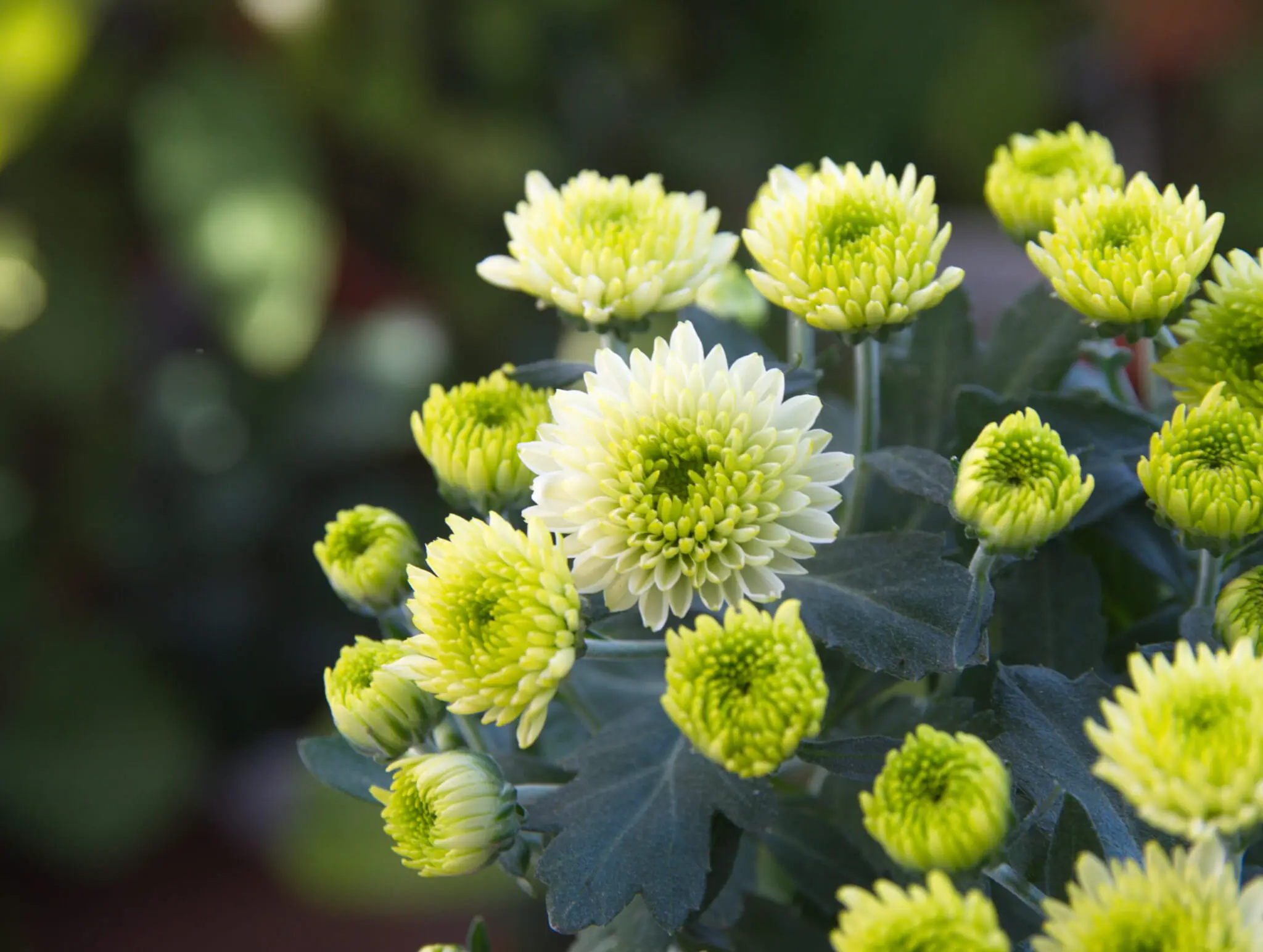
Chrysanthemum (Kiku)
Meanings: nobility, integrity, lofty status, warding evil spirits
Months in bloom: September to November
The chrysanthemum represents the Japanese imperial family and is considered one of the national flowers. As a result, it’s tied to hanakotoba such as nobility and lofty status.
Chrysanthemums are also often used at funerals and obon — an annual festival comparable to All Souls’ Day — and are said to have the power to ward off bad spirits. As such, chrysanthemums generally aren’t a great flower to give to someone casually, as beautiful as they are.
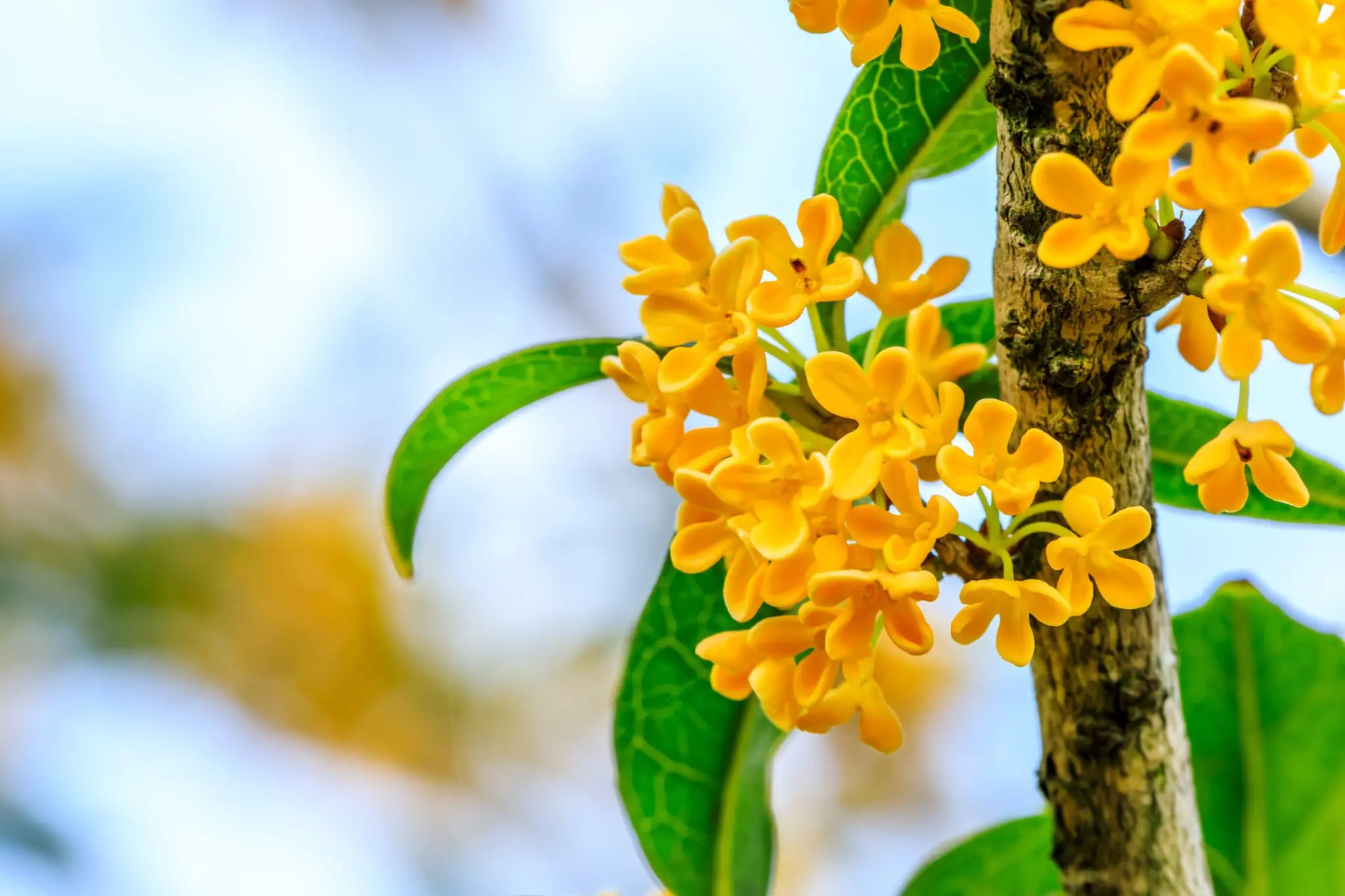
Orange Osmanthus (Kinmokusei)
Meanings: humility, truth, euphoria
Months in bloom: September to October
In autumn, you can smell kinmokusei blossoms before you see them; the lovely orange flowers — vibrant but unassuming in appearance — give off a beautiful fragrance, hence orange osmanthus’s hanakotoba associations with humility and fragrant euphoria.
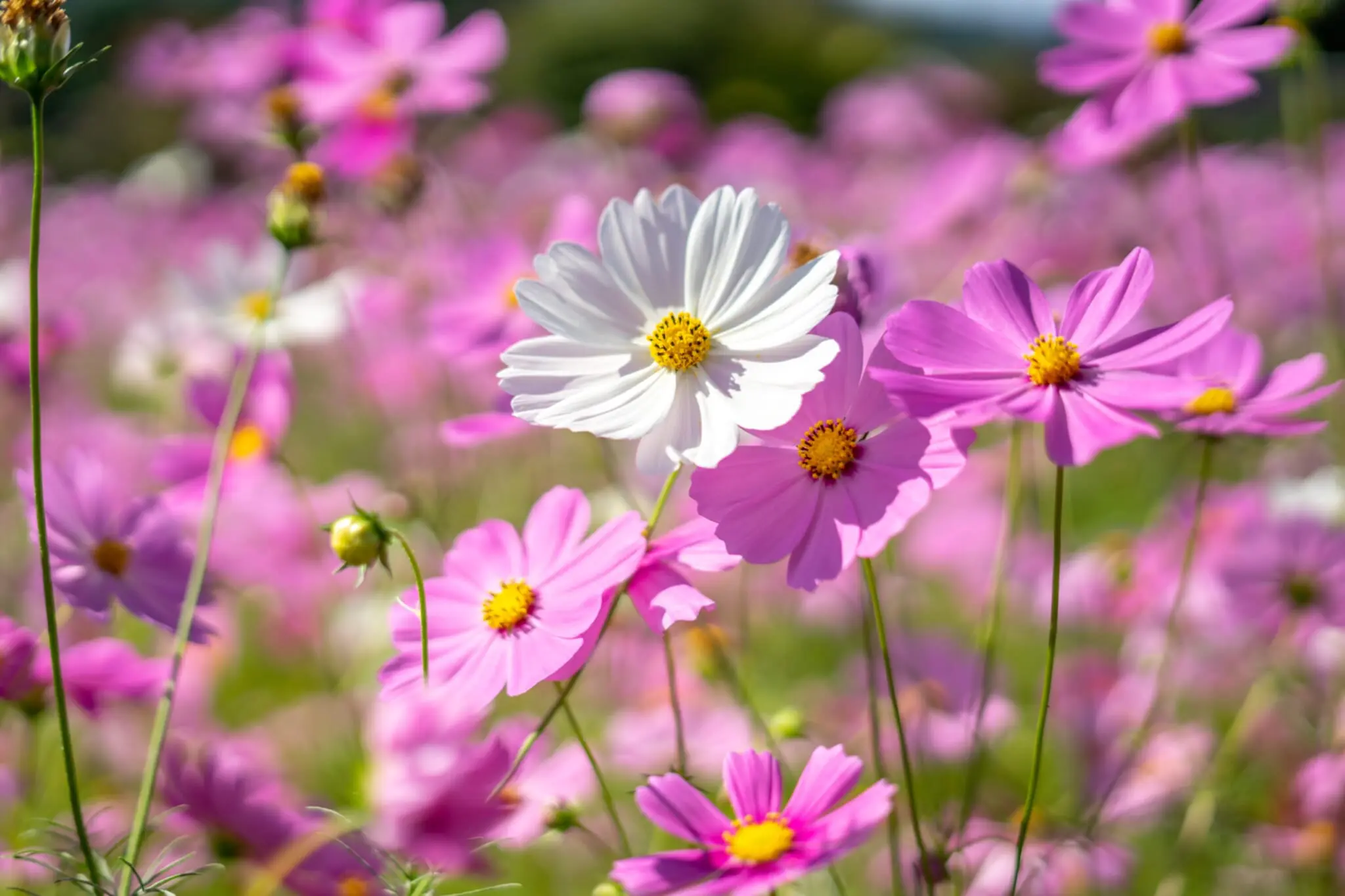
Cosmos (Kosumosu)
Meanings: order, harmony, the innocence of young women
Months in bloom: September to November
Cosmos blossoms, one of autumn’s favorite flowers, sway gently in the breeze, radiating innocence. From this, the cosmos has hanakotoba related to the innocence of young women. The word “cosmos” comes from the Greek “kosmos,” which translates to “universal order” and “harmony.”
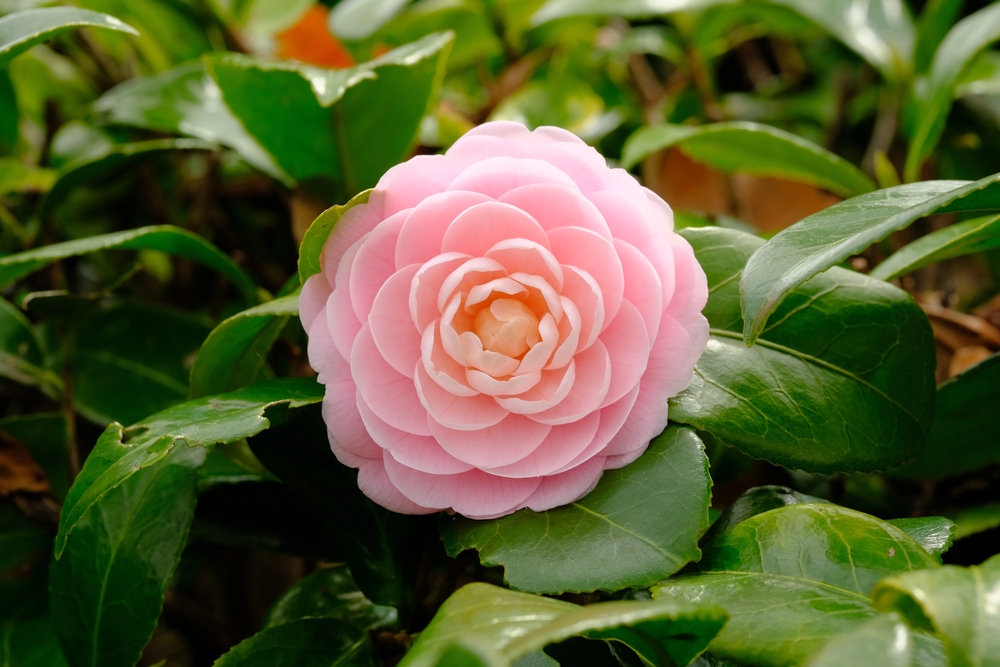
Winter Flowers
Camellia (Tsubaki)
Meanings: pride, understated kindness, impeccable charm
Months in bloom: November to April
The camellia flower — bright red, blushing pink or pristine white — blooms throughout Japan’s coldest months. Its understated yet graceful appearance has given it its hanakotoba: unpretentious elegance and pride.
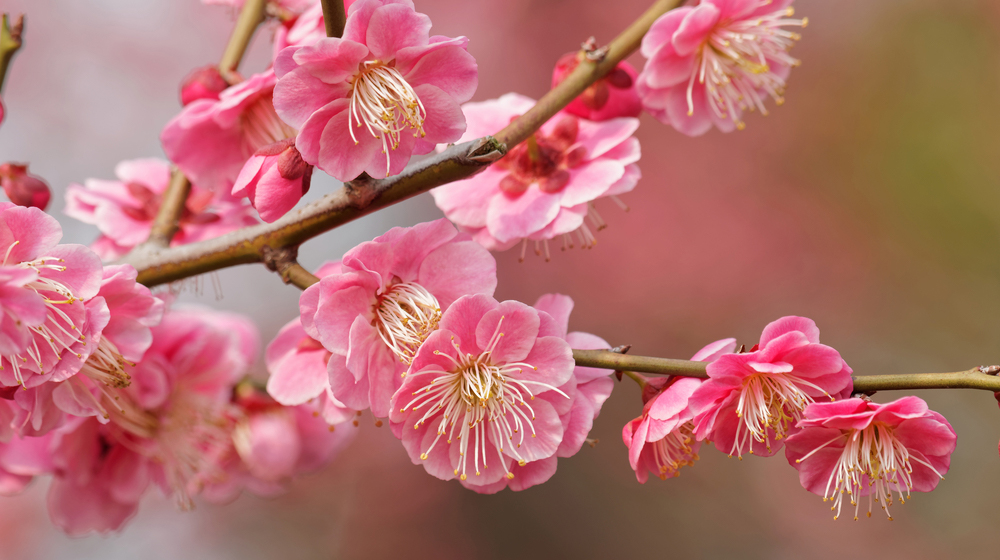
Japanese Plum Blossom (Ume)
Meanings: elegance, integrity, patience, faithfulness
Months in bloom: January to March
The blossoms of ume trees — known in English as both Japanese plum and Japanese apricot — generally come into full bloom in mid-February, adding color and charm to the landscape during the final cold weeks of winter. Witnessing ume flowers reminds us of the beauty of nature and that spring will arrive soon enough.

Daffodil (Suisen)
Meanings: vanity, self-love
Months in bloom: December to April
The daffodil’s botanical name, narcissus, provides an idea of what you can expect from the flower’s hanakotoba. Of course, Narcissus with a capital “N” refers to the young man who fell so in love with his own reflection that he ceased to eat and drink, and withered away. Where he died grew the white and gold flower known as the daffodil or narcissus. The flower can mean self-love or vanity, depending on how you spin it.
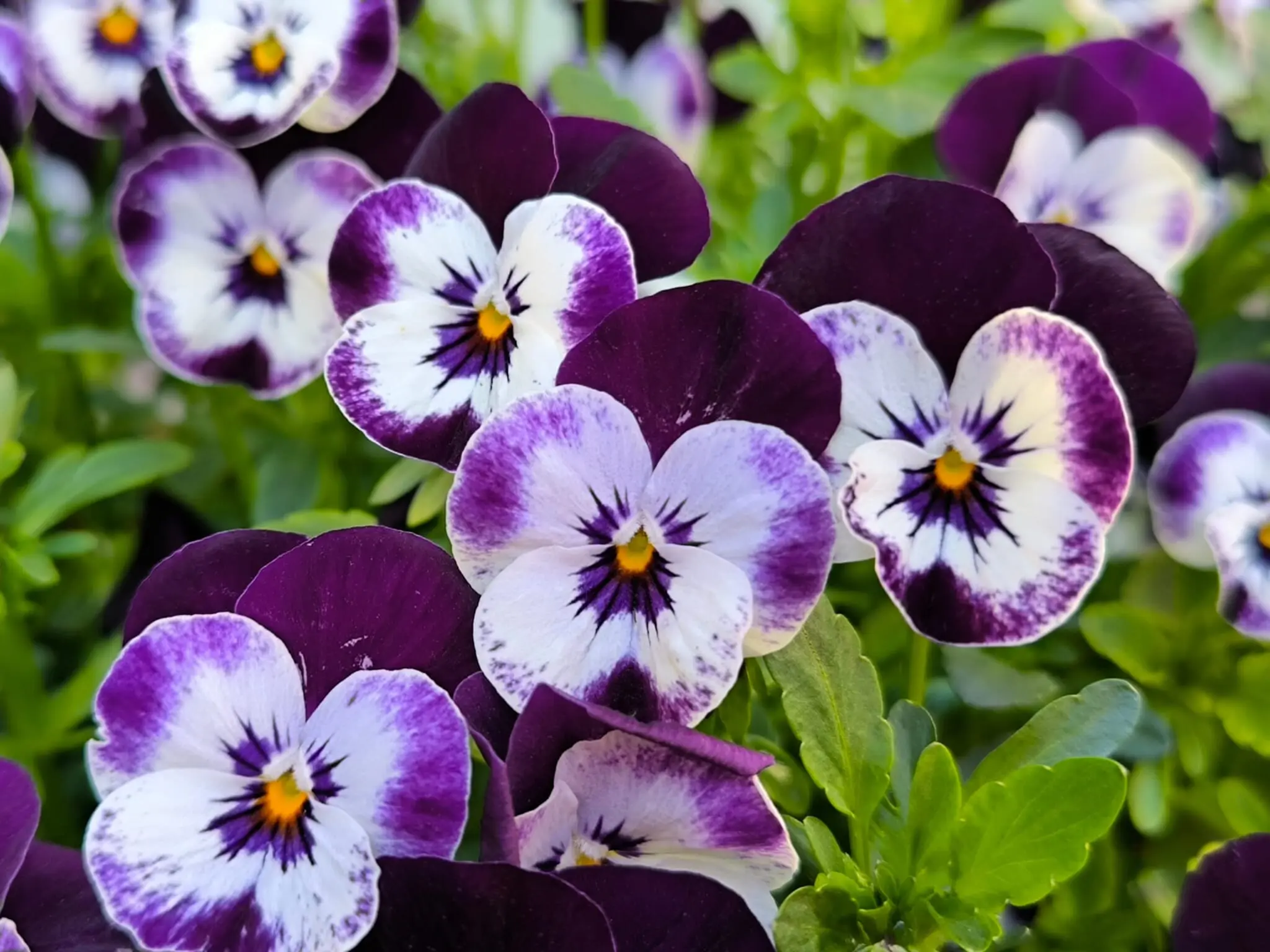
Pansy (Panjii)
Meanings: consideration, “thinking of you”
Months in bloom: October to May
Often seen sprouting optimistically and sturdily throughout the winter, pansies are related to thoughtfulness and kind love in hanakotoba. The flower, generally considered positive and vibrant, belongs to the genus Viola, along with violets. Pansies are the perfect flower to grow at home or to enjoy blooming in expansive flower beds and fields.
